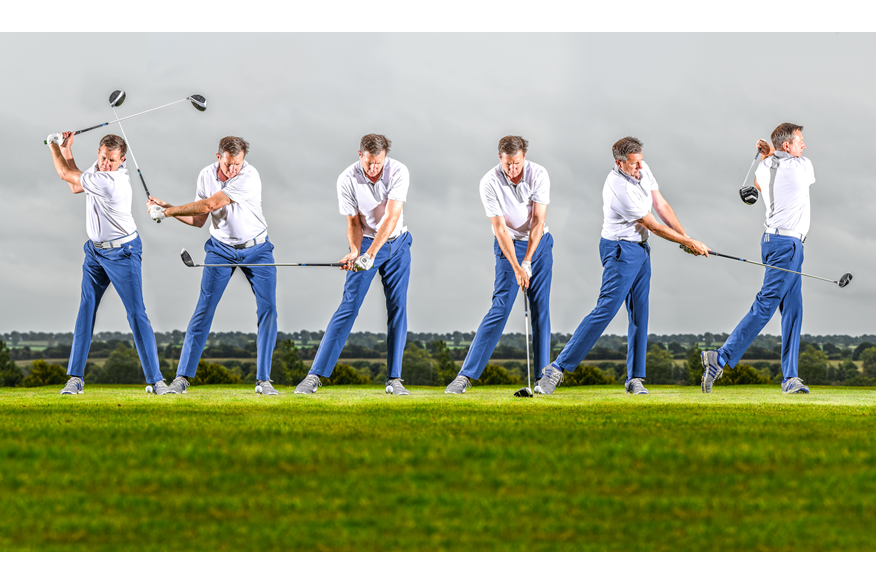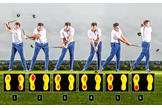Pressure tactics: Improve your transition
Published:
Improve your transition through the ball by working on your pressure through the ground
The transition – that change of direction from backswing to downswing – is a notorious weak point for the swing. But perhaps the best way to get on top of it is to consider your movement from the ground up. Work on your ground pressure shift and you promote the balance, speed and sequencing needed to hit the ball with power, control and consistency.
Down force
With the ability to monitor how much pressure a golfer applies down into the ground, modern force plates have revealed how elite golfers almost double their standing force through the early part of the downswing. By employing a motion that equates to a standing jump – squatting before pushing off against the turf – golfers use this down force to fire speed and power into the club. Look to bring this into your action as you work on shifting your pressure through the downswing.
Step 1: At the top
In fact we are slightly before the top here; the club will carry on to parallel. But you should feel your pressure shifting across to the lead side a beat before the backward motion of the club is completed. So this position represents as much weight as the back foot will take, around 70% – any more than this and it becomes hard to shift back into your lead side. Your ground pressure should also favour the trail heel, around 65% heel to 35% toe, in harmony with your coiling trail hip.
Step 2: Starting down
This part of the swing, where the lead arm moves down to roughly horizontal, is where the big hitters really hammer their ground pressure forward. Using the ideal ground-up sequence of movement, big hitters develop a squatting-type movement that puts a lot of force down into the ground; this helps create speed, force and the optimal club delivery. At this stage they will already have up to 80% of their downward pressure under their lead foot.
Step 3: Delivery
With the pressure shifted and your body set, the downswing moves into a more rotational phase. You should feel perhaps 85% of your ground pressure under your lead foot but now it begins to favour the heel, not the toe, as the lead hip clears. Power hitters are looking to create a feeling of pulling the handle upwards – a move that causes the clubhead to respond by releasing downwards faster – so they will blend this rotation with a feeling of pushing up, off the ground, through both feet.

Step 4: Impact
In terms of weight and pressure movement, impact will ideally be a mere stabilising of the frame before. You’ll still have around 85% under the lead foot, though it may be slightly more into the heel as your pelvic rotation continues. Many golfers feel they should return to set-up at impact, but this opening out of the lower body is perhaps the key change. Note how the upper body and spine still tilt behind through impact. A trait of good drivers, this shows how ground pressure can be forward, even though the head is behind the ball.
Step 5: Follow-through
As we move through the ball your pressure continues to move on to your front foot – by now around 90% – and increasingly under the heel. Notice the straight line being formed by lead leg, side and head. Believing they have to stay back to sweep the ball upwards, many amateurs are in more of a reverse-C position. But when your head stays back you can never really get through the ball. Trust club loft and a forward ball position to deal with launch, and keep your upper body stacked over your pelvis
Step 6: Finish
Almost every top golfer finishes with almost all their pressure under the lead foot. With the hip rotation complete and the belt buckle facing the target, probably 90% of that pressure is under the heel and just 10% under the toe. This completes a process of punching pressure forward as the backswing completes, before pushing up and rotating as the lead hip clears. All golfers create their own, individual pressure traces, but follow this template and you’ll set your swing very much on the right lines.


